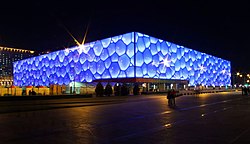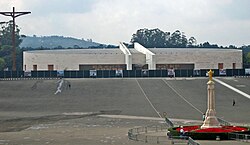| Year | Recipients | Image |
|---|
| 2021 | Beijing Daxing International Airport, Beijing, China |  |
| Rose Fitzgerald Kennedy Bridge, Glenmore, Ireland |  |
| 2020 | Hong Kong–Zhuhai–Macau Bridge, Hong Kong, Macau, and Zhuhai, China |  |
| 2019 | Mersey Gateway Bridge, Halton, UK |  |
| 2018 | Yavuz Sultan Selim Bridge, Istanbul, Turkey |  |
| 2017 | Phoenix Centre Beijing, China |  |
| 2016 | Shanghai Tower, Shanghai, China |  |
| 2015 | New East Span, San Francisco, USA |  |
| 2014 | Taizhou Yangtze River Bridge, Jiangsu Province, China |  |
| 2013 | London Velopark, London, United Kingdom |  |
| 2012 | Estadio Ciudad de La Plata, La Plata, Argentina |  |
| 2011 | Burj Khalifa Tower, Dubai, United Arab Emirates |  |
| 2010 | National Aquatics Centre, Beijing, China |  |
| 2009 | Church of the Most Holy Trinity, Fatima, Portugal |  |
| Three Countries Bridge, Weil am Rhein, Germany, and Huningue, France |  |
| 2008 | Copenhagen Opera House, Denmark |  |
| Lupu Bridge, Shanghai, China |  |
| 2007 | The New Roof of the Commerzbank-Arena, Frankfurt, Germany |  |
| 2006 | Central Bus Station Hamburg, Germany |  |
| Rio-Antirrio bridge, Greece |  |
| Millau Viaduct, France |  |
| 2005 | Gateshead Millennium Bridge, UK |  |
| 2004 | Milwaukee Art Museum Addition, Milwaukee, Wisconsin, USA |  |
| Madeira Airport Extension, Madeira Island, Portugal |  |
| 2003 | Bibliotheca Alexandrina, Alexandria, Egypt |  |
| Bras de la Plaine Bridge, Reunion Island, France |  |
| 2002 | Miho Museum Bridge, Japan |  |
| Stade de France, Paris, France |  |
| Øresund Bridge, Denmark – Sweden |  |
| 2001 | Guggenheim Museum Bilbao, Bilbao, Spain |  |
| Sunniberg Bridge, Klosters, Switzerland |  |
| 2000 | Glass Hall of Leipzig Trade Fair, Germany |  |
| Keyence Corporation Head Office and Laboratory, Osaka, Japan |  |
































